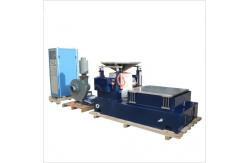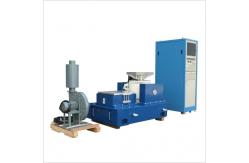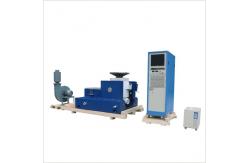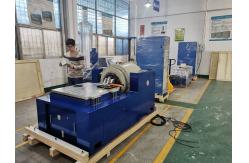Vibration Test System With Slip Table For RMS Random Vibration Testing
|
Detailed Product Description
Vibration Test System with Slip Table for RMS Random Vibration Testing
In the dynamic landscape of product development and quality
assurance across multiple industries, understanding how products
respond to real - world vibrations is essential. RMS (Root Mean
Square) random vibration testing has emerged as a critical method
for evaluating the durability and reliability of products. A
vibration test system equipped with a slip table tailored for such
testing provides a comprehensive solution for simulating complex
vibration scenarios. 1. The Significance of RMS Random Vibration Testing Mimicking Real - World Vibrations Random vibrations are a common occurrence in nature and various
industrial settings. Products ranging from aerospace components to
consumer electronics are exposed to vibrations that are not regular
or periodic. For instance, an aircraft in flight experiences
vibrations from engine operation, air turbulence, and structural
resonances. These vibrations are complex and unpredictable, making
it crucial to test products under similar conditions. RMS random
vibration testing aims to replicate these real - world vibrations
in a controlled laboratory environment. By subjecting products to a
wide spectrum of frequencies and amplitudes, manufacturers can
identify potential weaknesses in the design. This helps in ensuring
that products can withstand the vibrations they will encounter
during their lifespan, reducing the risk of failure in the field. Quantifying Vibration Intensity with RMS RMS is a statistical measure that provides a way to quantify the
intensity of random vibrations. It takes into account the amplitude
of the vibrations across the entire frequency range. In RMS random
vibration testing, the test profiles are designed to match the RMS
values of the vibrations expected in real - world applications. For
example, if a product is likely to experience vibrations with an
RMS acceleration of 5 g in a particular operating environment, the
vibration test system can be programmed to generate a random
vibration profile with an RMS value of 5 g. This allows for a more
accurate assessment of the product's performance under realistic
vibration conditions. 2. Understanding the Vibration Test System with Slip Table Components of the Vibration Test System The vibration test system consists of several key elements. The
vibration generator, which can be an electrodynamic or hydraulic
shaker, is responsible for producing the vibrations. In an
electrodynamic shaker, an electrical current is applied to a moving
coil suspended in a magnetic field. According to Fleming's left -
hand rule, this creates a force that causes the coil to move,
generating vibrations. The power amplifier supplies the necessary
electrical power to drive the shaker. The controller is the brain
of the system, allowing operators to set the desired vibration
parameters such as the frequency range, amplitude levels, and the
RMS value of the random vibration. The Role of the Slip Table The slip table is a unique and valuable feature of this vibration test system. It is designed to allow the
test specimen to move or slide relative to the vibration source. In
many real - world scenarios, products experience not only
vibrations but also relative movement. For example, in a vehicle's
suspension system, the components move relative to each other while
being subjected to vibrations. The slip table can simulate such
scenarios. It has a low - friction surface, enabling the test
specimen to move freely in one or more directions during the
vibration test. This adds an extra dimension to the testing
process, providing more comprehensive data on how the product will
perform in real - world conditions.
3. How the System Performs RMS Random Vibration Testing Generation of Random Vibration Profiles To perform RMS random vibration testing, the vibration test system
uses advanced algorithms to generate random electrical signals.
These signals are then amplified and sent to the vibration
generator. The random nature of the signals ensures that the
resulting vibrations cover a wide range of frequencies and
amplitudes, similar to those in real - world situations. The
controller precisely adjusts the characteristics of the random
signal to achieve the desired RMS value. For example, if the target
RMS acceleration is 3 g, the controller will continuously monitor
and adjust the signal to maintain this value throughout the test. Interaction with the Slip Table When the slip table is in use, the test specimen is mounted on it.
As the vibration generator produces the random vibrations, the slip
table allows the specimen to move according to the forces acting on
it. Sensors placed on the slip table and the test specimen measure
the movement and vibrations. This data is fed back to the
controller, which can then make real - time adjustments to the
vibration profile. For instance, if the test specimen starts to
move in an unexpected way on the slip table, the controller can
modify the vibration parameters to better simulate the real - world
conditions. 4. Performance Features of the Vibration Test System High - Precision Vibration Control The vibration test system offers high - precision control over the
RMS random vibration. The frequency accuracy is typically within
±0.1%, allowing for precise replication of the desired frequency
spectrum. The amplitude control is also highly accurate, with an
amplitude accuracy of around ±1%. This level of precision is
crucial for ensuring that the test results are reliable and
repeatable. For example, when testing a sensitive electronic
component for a satellite, the system must be able to precisely
reproduce the RMS random vibrations it will encounter during launch
and in - orbit, enabling accurate assessment of the component's
performance. Wide Dynamic Range The ability to cover a wide dynamic range is another important
feature. The system can generate vibrations with very low
amplitudes, suitable for testing products in low - vibration
environments, such as medical devices in a hospital setting. At the
same time, it can produce high - amplitude vibrations for products
that experience extreme conditions, like components in a high -
performance race car. The wide dynamic range ensures that the
system can meet the testing needs of a diverse range of products. Robust and Reliable Construction Given the repetitive and demanding nature of RMS random vibration
testing, the vibration test system is built with robust and
reliable construction. The vibration generator, slip table, and
other mechanical components are made of high - strength materials
such as aluminum or steel to withstand the high forces generated
during testing. The electrical and electronic components, including
the power amplifier and controller, are designed to operate
continuously under high - stress conditions without degradation.
The system is also equipped with safety features to protect the
test specimen and the operators. This robust construction ensures
that the system can perform thousands of tests over its lifespan
without significant maintenance, reducing downtime and increasing
the efficiency of the testing process. 5. Applications of the Vibration Test System in Different
Industries Aerospace Industry In the aerospace industry, RMS random vibration testing is crucial
for ensuring the reliability of aircraft and spacecraft components.
The vibration test system with slip table is used to test
components such as avionics systems, engine mounts, and structural
elements. For example, an aircraft's wing structure is tested to
ensure that it can withstand the vibrations from the engines and
air turbulence during flight. The slip table can simulate the
relative movement of the wing components, providing valuable data
for design improvements. Automotive Industry The automotive industry benefits greatly from this type of
vibration testing. Components such as engines, transmissions, and
suspension systems are tested to ensure their durability under the
vibrations experienced during normal driving and in extreme
conditions. For example, the engine mounts of a car are tested to
see how well they can isolate the engine vibrations from the
vehicle's body. The slip table can simulate the movement of the
engine relative to the chassis, helping manufacturers optimize the
design of the engine mounts. Electronics Industry In the electronics industry, where products are often subjected to
vibrations during transportation and use, the vibration test system
is used to test smartphones, laptops, and other portable devices.
For example, a smartphone is tested to ensure that its internal
components, such as the battery, camera module, and motherboard,
can withstand the vibrations from being carried in a pocket or bag.
The slip table can simulate the movement of the device during
normal use, allowing manufacturers to identify and address
potential design flaws. 6. Conclusion The vibration test system with slip table for RMS random vibration
testing is a powerful tool for product development and quality
assurance across multiple industries. By accurately simulating real
- world vibrations and allowing for relative movement of the test
specimen, it provides valuable insights into the performance and
durability of products. With its high - precision vibration
control, wide dynamic range, and robust construction, this system
plays a crucial role in ensuring that products meet the high -
quality standards required in today's competitive market. If your
industry requires reliable RMS random vibration testing, investing
in such a vibration test system can significantly enhance the
performance and reliability of your products. |
||||||||||||||||||||||||||||||||
| Product Tags: Slip Table Vibration Test System RMS Random Vibration Test System Vibration Test System |
Related Products
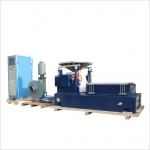
|
20kN Random Vibration Testing Equipment Meets ISTA 6 Testing Standard |
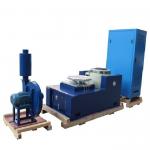
|
Electrodynamic Shaker Systems Runs Sweep Vibration Test Meets IEC 60068 2 6 Vibration Testing |
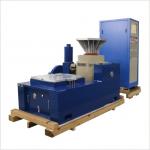
|
20kN Vibration Shaker Machine Performs Shock and Vibration Testing for Automotive Field |
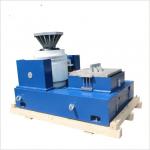
|
High Frequency Vibration Table For Testing Satellite And Spacecraft Components |
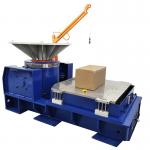
|
Packaging Vibration Testing Equipment Runs Random Vibration Testing For Dummie |

|
Vibration Test Chamber Performs Temperature And Vibration Testing For Automotive Field |
Email to this supplier

